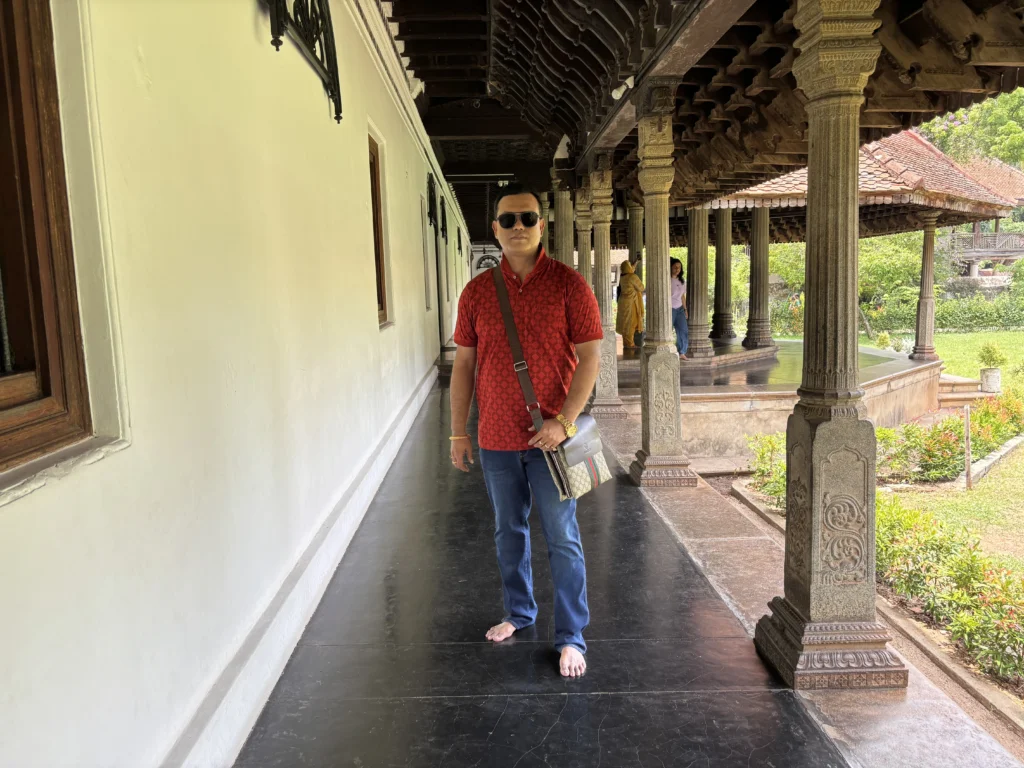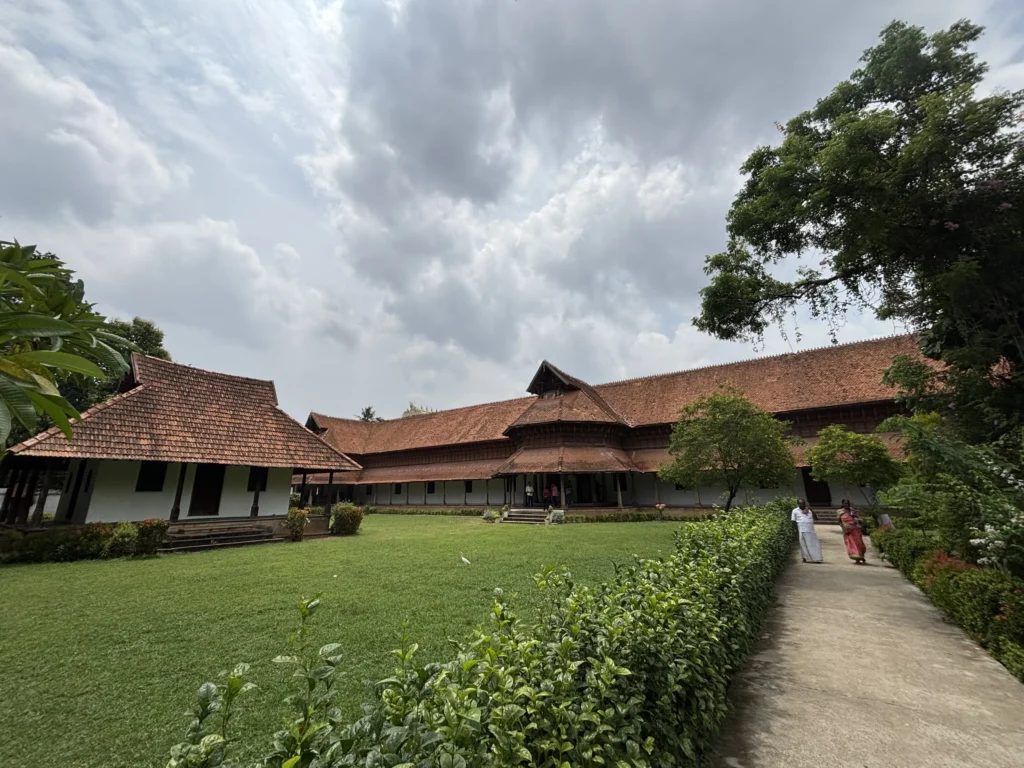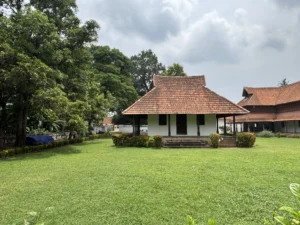In the heart of Thiruvananthapuram, adjacent to the sacred Padmanabhaswamy Temple, stands a palace of rare artistic grandeur and melancholic history—Kuthiramalika, also known as Puthen Malika. A marvel of Kerala architecture, it was the dream project of the visionary king, Swathi Thirunal Rama Varma, a genius of music, administration, and art. But behind its elegant wooden brackets and galloping horse motifs lies a shadow—a Vastu dosha that may have sealed the fate of its builder.


A King Destined, A Palace Doomed
Swathi Thirunal, born in 1813, was a child king by title and a ruler by temperament. Declared heir before his birth to save the Travancore kingdom from British annexation, he matured into one of the greatest monarchs in Kerala’s cultural history. Yet his final years were abruptly darkened—plagued by grief, solitude, and mysterious physical decline that culminated in his untimely death at the age of 33—just a few months after moving into the newly built Kuthiramalika Palace in 1846.
Could a palace constructed with such vision truly harbor ill fortune? As a Vastu expert with decades of experience decoding spiritual and architectural energies, I believe the Vastu defects in Kuthiramalika may offer unsettling answers.
Key Vastu Doshas in Kuthiramalika Palace

1. South-Facing Main Entrance (179° S) – Yama Konam Dosh
The most glaring Vastu violation in Kuthiramalika is its south-facing main entrance, precisely aligned to 179°—true south. According to classical Vastu scriptures, especially the Matsya Purana and Vishwakarma Vastu Shastra, the southern entrance is considered Yama Konam, the direction of Yama, the god of death.
- This entrance brings instability, emotional distress, and health issues when not properly counterbalanced.
- Such placement may invoke Yamagraha’s influence, believed to drain life force, especially for the head of the house or ruler.
2. Southwest Entry Placement—Pitru Dosh & Mental Distress
The palace entrance is situated at the southwest quadrant, a zone ruled by Nairitya (Pitra devta). This zone is meant for anchoring stability and storing family wealth. Entry from this side weakens spiritual grounding and leads to ancestral unrest. In Swathi Thirunal’s case, this aligns eerily with:
- The deaths of his wife, children, and sister soon after shifting to the palace.
- His descent into isolation and mental fatigue.
3. Absence of Brahmasthan (Central Courtyard)—Energy Disruption
Unlike typical Kerala palaces, Kuthiramalika lacks a Brahmasthan, the open courtyard in the center of the house representing cosmic consciousness and universal energy flow.
- Its absence blocks spiritual elevation, causing internal stagnation.
- The king’s creative genius may have been suffocated by this energetic void.
4. Temple Placement in the Northwest—Deva Shakti Virodha
The proximity of the Padmanabhaswamy Temple to the northwest of the palace disrupts the cosmic energy circuit.
- Northwest is ruled by Vayu (Air) and relates to movement and support.
- Placing the main deity here can cause instability, lack of grounding, and constant mental unrest.
- The King’s desire to stay near his Ishta Devata might have unknowingly violated sacred spatial norms.
Unfolding of the Vastu Effect: A Timeline of Decline
- 1842–1846: Construction of the palace begins. Despite warnings from court scholars, the orientation remains unchanged due to design aesthetics and devotion to Lord Padmanabha.
- Mid-1846: Palace completed. King Swathi Thirunal shifts in.
- Within months: Family deaths occur; he withdraws from court and isolates himself in the palace.
- Late 1846: Swathi Thirunal dies under mysterious, undocumented health complications.
The synchronicity of the palace’s completion and the King’s downfall suggests an invisible hand at play—an imbalance in energy, deeply rooted in the Vastu errors of the palace.
Kuthiramalika: A Monument or a Mausoleum?
The palace, adorned with 122 horse carvings, was meant to represent royal vigor, artistic gallop, and forward momentum. Ironically, it became a symbol of stalling destiny. Following the king’s death, the palace was abandoned for nearly a century, used only as a granary, and never served again as a royal seat—a clear indication of spiritual disapproval and energetic contamination.
Even today, only 30% of the palace is open to visitors. The remaining sections lie secluded, shrouded in silence.
Vastu Wisdom for the Future
The tale of Kuthiramalika serves as a chilling reminder of how architecture is not just form but a medium of life energy. No matter how aesthetically pleasing, when Vastu principles are violated:
- Kings can fall.
- Dynasties can decline.
- Legacies can be eclipsed.
In my years as a Vastu consultant, I have seen similar patterns in palatial homes, corporate headquarters, and spiritual centers. Vastu is not superstition—it is energy science, validated by centuries of experience.
A Royal Lesson in Energetic Architecture
Swathi Thirunal, the jewel of Travancore, gifted Kerala its artistic and educational soul. But his body could not withstand the silent forces he unknowingly invited. The south-facing Kuthiramalika palace, magnificent as it is, may well have been his Vastu-shaped coffin.
Let this be a case study for modern architects, royal homes, and spiritual seekers—honor the directions, and they will honor you. Disregard them, and history may repeat itself.
Authored by:
Acharya Sailyajit
Founder, Sailyajit Vastu™ & Interior Consulting
India’s Trusted Vastu Expert | Tantra-Jyotisham Scholar | Occult Mentor
For Vastu consultations: +91-6003937773 / +91-7575923777





